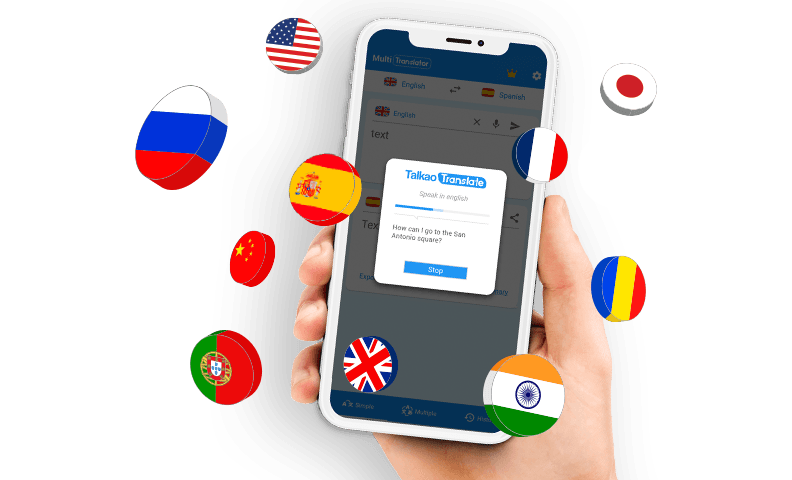
Document translation plays a critical role in many branches of law. A mistranslation, a missing term, or a slight alteration in the meaning of a clause can lead to serious consequences. That’s why lawyers pay close attention to how legal documents are translated.
However, professional legal translation services are often expensive and, in some regions, hard to find—creating a major challenge for both legal professionals and their clients.
Contracts, service agreements, official provisions, and regulatory documents are among the most commonly translated legal texts. Yet, there are many documents that require legal review at every stage of an international agreement. For that reason, legal document translation needs to be fast, accurate, and often, strictly confidential.
Talkao’s AI-powered document translation feature allows lawyers, businesses, and individuals to translate legal documents without intermediaries. This specialized legal tool is supported by cutting-edge artificial intelligence and enables you to translate virtually anything—regardless of language, script, or format, and without the need to retype the text.
All this can be done directly from your mobile device, in just a few minutes, and with the highest levels of security and confidentiality.
Let’s take a closer look at how it works.
When is legal document translation needed?
In today’s world, globalization and the internationalization of services have become part of daily life. Individuals and companies from every sector and country offer and receive services across borders. This reality presents a significant challenge for legal professionals, who must ensure that their clients’ rights and obligations are upheld—often across multiple languages.
That’s when legal document translation becomes urgent.
A document written in another language must be understood fully and without misinterpretation. Every word must be translated accurately and faithfully, without altering the original meaning. However, as any legal expert knows, literal word-for-word translation often fails, potentially omitting essential nuances.
Therefore, legal translation requires more than just a dictionary—it demands a deep understanding of both legal language and cultural context. Laws are strict about ensuring that each party is held accountable for what they sign. And lawyers understand that a breach caused by a poor translation is often difficult to defend.
Here are some of the most common situations where professional, accurate document translation is essential:
International contracts and commercial agreements
One of the most frequent needs for document translation arises when signing contracts with foreign parties. A contract written in Spanish, French, German, or any other language must be fully understood by all involved parties.
In these cases, a literal translation isn’t enough—each clause must clearly and accurately reflect the rights and responsibilities of each side, leaving no room for ambiguity.
Some common examples of translated documents in this context include:
- International sales agreements
- Non-Disclosure Agreements (NDAs)
- Terms and conditions of service
- Employment contracts with international clauses
These documents often contain jurisdiction-specific provisions. So it’s crucial to clearly define conditions, deadlines, penalties, and any other key details. Before signing, both parties should review and negotiate the terms to avoid future disputes.
Legal proceedings in foreign countries
Individuals and businesses may face labor, commercial, civil, or even criminal proceedings abroad. When a legal case involves parties from different countries, courts often require officially translated documents, especially when submitted as evidence, testimony, or legal argument.
Documents commonly required in these cases include:
- Marriage, divorce, birth, or death certificates
- Previous court rulings
- Medical or psychological reports
- Witness statements in other languages
- Contracts, bonds, insurance policies
- Corporate records and articles of incorporation
- Sworn declarations
Here, technical accuracy and correct document translation are non-negotiable. Translations must be recognized by public or judicial authorities in the target country. However, understanding the content is just as important as ensuring its legal validity.
Immigration and citizenship applications
In immigration, residency, or nationality procedures, it’s common to present officially translated documents. These usually include:
- Birth certificates
- Criminal background checks
- Diplomas and academic degrees
- Notarized foreign documents
These documents must be translated by a certified translator. However, before submission, it’s vital to fully understand their content and ensure legal validity in the migration process.
International Mergers and Acquisitions (M&A)
During M&A operations, information flows across multiple jurisdictions. If you’re involved in due diligence or pre-acquisition audits of a foreign company, document translation becomes essential.
Documents often translated in this context include:
- Financial statements
- Compliance reports
- Articles of incorporation
- Corporate documentation
In corporate and financial law, accurate translation is key for making informed decisions. Evenmore, to avoid misunderstandings that could lead to financial or legal consequences down the line.
Intellectual property and patents
When registering patents, trademarks, or copyrights abroad, precise legal and technical translation is crucial. This field requires high specialization and attention to detail—an oversight can result in rejection or loss of rights.
Lawyers handling these matters must understand specific terminology from fields such as:
- Engineering
- Pharmacy and Science
- Technology
- Industrial design
- Literature, arts, and music
Translations must also meet the formal requirements of national and international bodies. This will ensure both parties clearly understand the conditions involved.
Inheritance and international estate planning
When someone passes away in a country different from their nationality or residence, succession procedures can become complex. Legal translation is needed for:
- Wills and testaments
- Death certificates
- Powers of attorney
- Bank and estate documents
Here, precise document translation is critical to ensure that the deceased’s wishes are respected. Also, it is required to ensure that assets are distributed according to the law.
Now that we’ve covered when legal document translation is essential, it’s time to address the crucial question: What are the consequences of a poor or inaccurate translation?
Unfortunately, these mistakes happen more often than you’d expect—and their impact can be serious. Let’s explore the most common and costly risks in the next section.

What are the consequences of poor legal document translation?
If there’s one thing lawyers know for sure, it’s this: in legal contexts, every word matters. The legal implications of a mistranslated term can be significant—ranging from delays in proceedings to the complete invalidation of international contracts. That’s why, when legal processes cross borders, it becomes essential to understand and interpret every word with absolute precision.
Legal document translation is not just about converting words from one language to another. It’s about preserving the legal meaning, tone, and technical terminology with meticulous accuracy. As a legal professional, you must rely on translations that are precise and aligned with the appropriate legal framework.
But what happens if a document is not translated correctly? Here are some of the most critical and common consequences of inaccurate legal document translation:
Loss of legal validity
One of the most direct consequences of a poor translation is the potential loss of the document’s legal validity. If a mistranslated document is submitted to a court or administrative body, it could be rejected outright. This may result in:
- Denial of a residency, citizenship, or visa application
- Nullification of an international contract due to a party not fully understanding the terms
- Invalid power of attorney if the grantor’s intent is not accurately reflected
It may sound extreme, but a single mistranslated word can undermine the legal weight of an entire document. That’s why accurate and effective document translation plays such a crucial role in legal proceedings.
Damage to professional credibility
If you’re a lawyer or legal advisor, your clients trust you to manage every aspect of their legal matters—including multilingual documentation. Submitting a document riddled with translation errors can do more than damage one case—it can tarnish your professional reputation.
In the legal field, trust is everything. A poorly translated legal document may cause your clients to:
- Doubt your professional judgment
- Switch law firms or advisors
- File complaints for malpractice or negligence
And let’s not forget the power of a bad review—reputation is built through accuracy and lost through avoidable mistakes.
Contract disputes and legal action
In international contracts, ambiguity caused by poor translation can lead to disputes between parties. Incorrectly translated terms, conflicting clauses, or the omission of essential conditions can cause:
- Unintentional breach of contract
- Lawsuits for damages
- Costly litigation in multiple jurisdictions
For instance, a term like “liability” in English carries specific legal implications. It’s not always equivalent to the word “responsibility” in other languages. A mistranslation here could assign unintended obligations or expose your client to legal risks.
Delays in legal or administrative processes
In many legal proceedings, timelines are critical—especially in areas such as immigration, international inheritance, or corporate mergers. If a document is rejected due to translation errors, you’ll need to start over, which could lead to:
- Delays in court case processing
- Missed business opportunities
- Expired legal deadlines with irreversible consequences
Moreover, many courts require sworn or certified translations. Submitting an incorrect version could pause or void the entire process. Even when working with a certified translator, it’s vital to first understand the content yourself.
Financial and tax penalties
In business settings, an inaccurate translation of financial records, contracts, or licenses can lead to serious financial repercussions, such as:
- Misinterpreted tax filings resulting in audits or fines
- Confusing labor clauses leading to employee claims
- Financial reports with incorrect terminology that scare off investors
A poor translation doesn’t just affect your image—it can damage your finances. This is something to consider every time you handle a legal document translation.
Loss of property or inheritance rights
When managing inheritance, estates, or real estate in another country, errors in translation can be devastating. A mistranslated will, notarial deed, or certificate could result in loss of rightful ownership.
Imagine a clause in a will being mistranslated, excluding a legitimate heir. Or critical details like property values, boundaries, or numbers being misunderstood. This can cause:
- Prolonged and expensive family disputes
- Extra legal and notarial costs
- Disagreements with banks or land registries
Respecting the testator’s intent—and complying with the law—depends largely on the accuracy of the document translation. As the saying goes: “In inheritance matters, lawyers don’t have to win—precision does.”
Criminal consequences
In rare but serious cases, a poor legal translation can even lead to criminal consequences. For example:
- In criminal trials involving foreign witnesses, an inaccurate translation of their statement can affect the verdict
- In extradition or international cooperation cases, misinterpretation could violate fundamental rights or cause judicial errors
That’s why certified legal translators and sworn interpreters are mandatory in these situations. Still, a lawyer who has a precise pre-translation of the documents is better prepared for court.
On account of this… How can you ensure fast, accurate, and cost-effective legal document translation?
After reviewing all the risks above, you’re probably asking yourself the right question: How can I guarantee fast, accurate, and affordable legal document translation—for myself and my clients?
The answer lies in technology and AI-powered innovation. Let’s explore how this new approach is revolutionizing the field of legal translation.

AI-powered document translation: Innovation literally at your fingertips
The legal profession, while highly technical, in-depth, and specialized, is also a way of life. As a lawyer, the quality of your services depends on many factors—your academic preparation, available resources, and above all, your ability to resolve cases efficiently and swiftly.
That’s why many legal professionals are turning their attention to international cases, which offer significant advantages. Beyond the academic or professional appeal, these cases are often financially rewarding and a great way to enhance your professional reputation.
But there’s a common obstacle: language. For many lawyers, language barriers are one of the biggest challenges in practicing law across borders. Naturally, legal document translation becomes one of the most feared bottlenecks. And after understanding the serious consequences of poor translation, it’s clear that this fear is justified.
But what if there were a way to translate documents accurately, without transcription, in any language or alphabet? And what if you could do it directly from your phone—without paying for expensive translation services?
Translating legal documents with AI
Thanks to Talkao’s AI-powered document translation, you can now translate any text into any language. Artificial intelligence technology allows for extremely accurate translations, even in specialized fields like legal language. This means the system doesn’t just translate the words—it understands and applies the correct legal context.
As a result, you get a translated legal text that respects the original content while adjusting terminology to suit your target legal system. Best of all, there’s no need to transcribe the original text manually, significantly reducing the chance of errors.
OCR technology: Translate without transcribing
With OCR (Optical Character Recognition), the translator simply needs an image of the original document. The Talkao image translation feature can recognize over 125 languages and alphabets, including complex scripts.
It also supports a variety of formats such as PDFs, printed texts, embedded images, and even handwritten notes. This powerful AI translator app can process and translate legal documents regardless of their original format—in just seconds.
It delivers exceptional accuracy, minimizes translation risks, and allows you to work efficiently without leaving your office.
AI voice translation for lawyers
Talkao AI-powered translation technology doesn’t stop at text—it also includes speech recognition and voice translation. With this feature, you can translate spoken statements, interviews, or readings from one language to another in real-time.
This greatly expands your ability to serve international clients, manage cross-border cases, and participate in multilingual legal scenarios—without needing a human interpreter.
Why Talkao is the ideal legal translation tool
Without a doubt, for lawyers who want to stay ahead in a globalized world, Talkao’s AI translation tools are a strategic ally. Whether you’re dealing with contracts, affidavits, powers of attorney, or official correspondence, this technology provides:
- Fast, accurate legal translations
- Compatibility with a wide range of file formats
- The ability to work with over 125 languages and legal systems
- Greater productivity, client satisfaction, and case resolution speed
In short, legal document translation no longer has to be expensive, slow, or stressful. With AI-driven tools like Talkao, you now have innovation—literally at your fingertips.








Newsletter